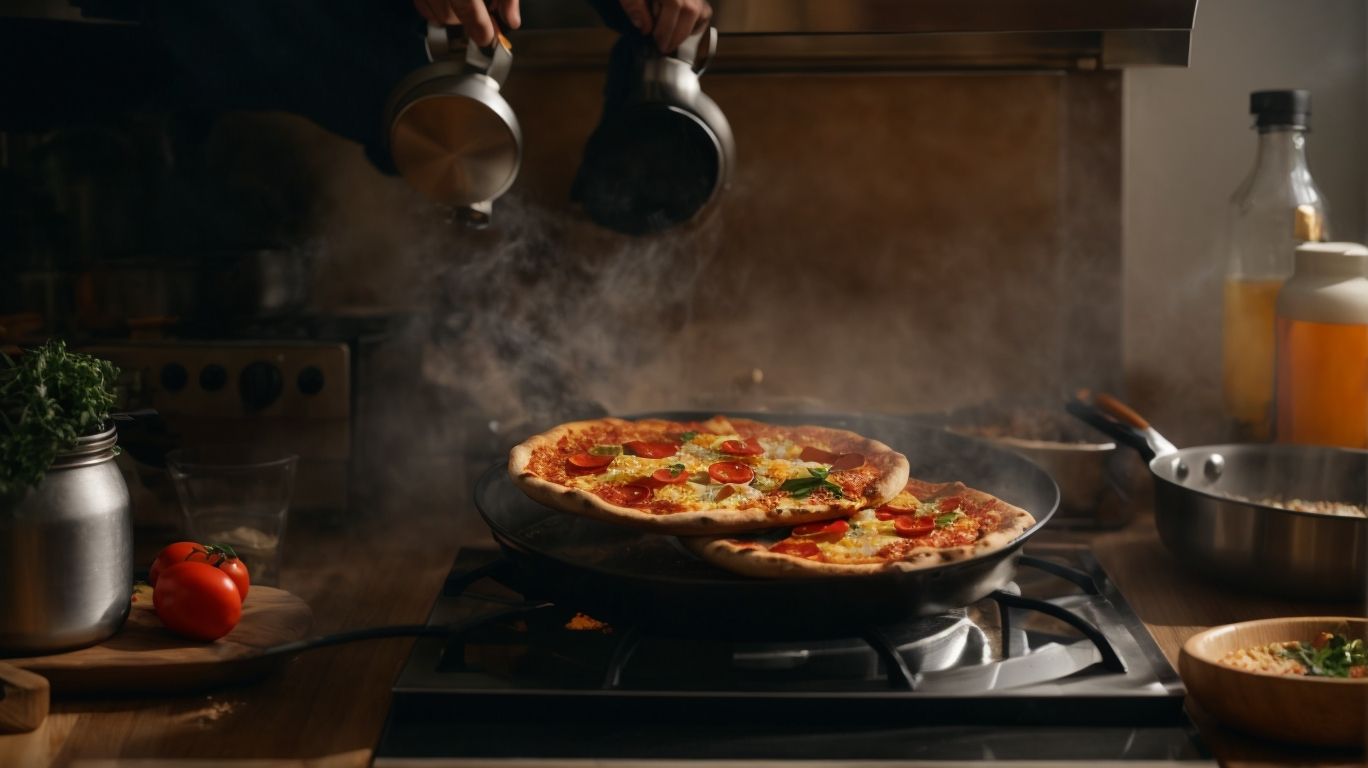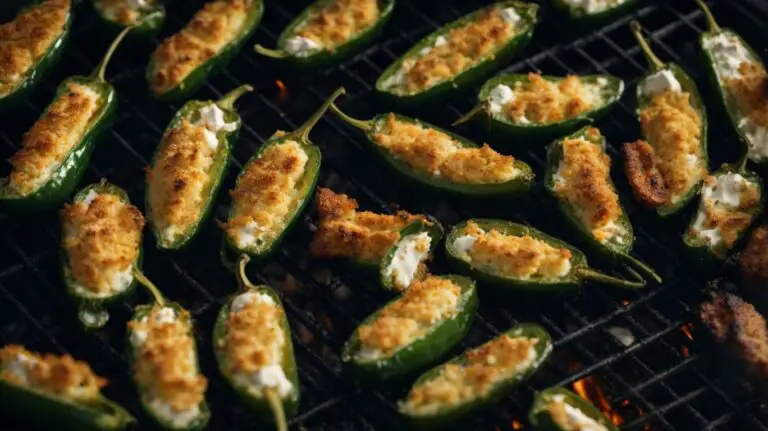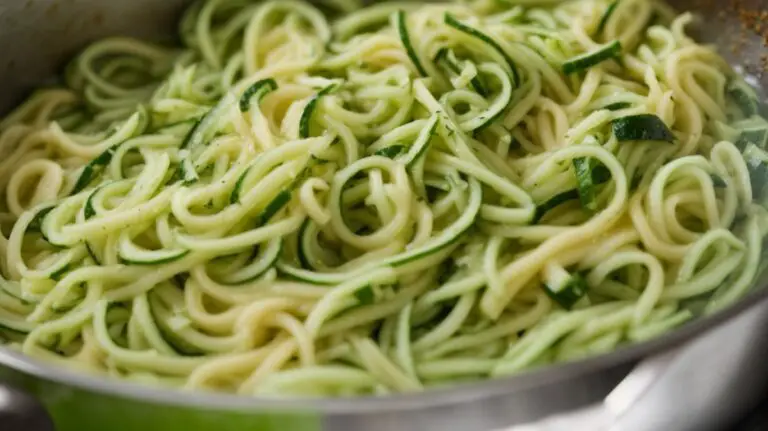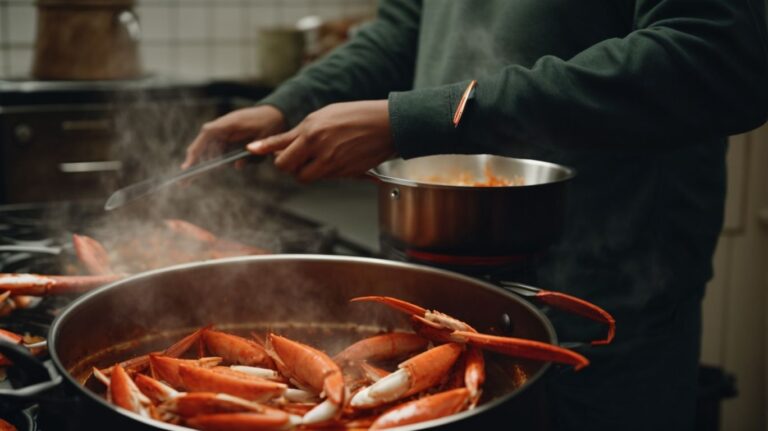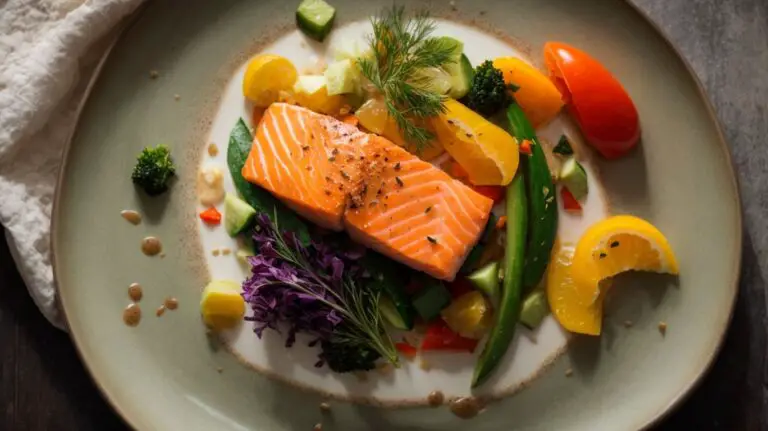How to Cook a Pizza Without an Oven?
Who says you need an oven to enjoy a delicious pizza?
We explain why cooking pizza without an oven could be a fun and practical choice.
Learn about using different cooking methods like stovetop, grill, and campfire and the essential ingredients you’ll need to make a tasty pizza.
Follow our step-by-step guide and discover tips and tricks to perfect your homemade pizza without an oven.
Get ready to enjoy a mouthwatering pizza experience like never before!
Key Takeaways:
Why Cook Pizza Without an Oven?
Cooking pizza without an oven offers flexibility and convenience, especially when culinary options are limited.
Imagine being in a cozy cabin without an oven but craving a delicious pizza – that’s when knowing how to make pizza on the stove top becomes incredibly handy. Not only does this method save time, but it also conserves energy, making it a more sustainable choice. Cooking pizza on a stove top allows for more control over the cooking process, enabling you to achieve the perfect crispiness and toppings melding together harmoniously. Stove top pizza cooking is a versatile skill that can be utilized in various settings, whether it’s a camping trip, a power outage at home, or simply wanting a quick homemade meal without waiting for preheating time.
No Oven Available
For college students or those living in dorm rooms without access to traditional ovens, cooking pizza without an oven becomes a practical solution.
One of the main challenges of not having an oven available is the inability to achieve that crispy, perfectly baked crust that is often associated with traditional oven-baked pizzas. However, fear not, as there are alternative methods you can explore to still enjoy a delicious homemade pizza. Stove-top cooking is a popular choice for many individuals looking to make pizza without an oven, as it allows for a similar cooking process but in a more constrained environment.
Outdoor Cooking Experience
Cooking pizza without an oven can provide an exciting outdoor culinary experience, embraced by chefs seeking unique cooking methods.
One of the appeals of outdoor cooking for chefs and food enthusiasts is the opportunity to experiment with unconventional techniques to create delicious dishes while immersing in nature’s surroundings. The challenge of making a flavorful, crispy pizza without the traditional oven sparks creativity and resourcefulness.
From using a grill to a campfire, the options for outdoor pizza preparation are vast, allowing individuals to tailor their cooking style to their preferences and surroundings.
What Are the Different Methods of Cooking Pizza Without an Oven?
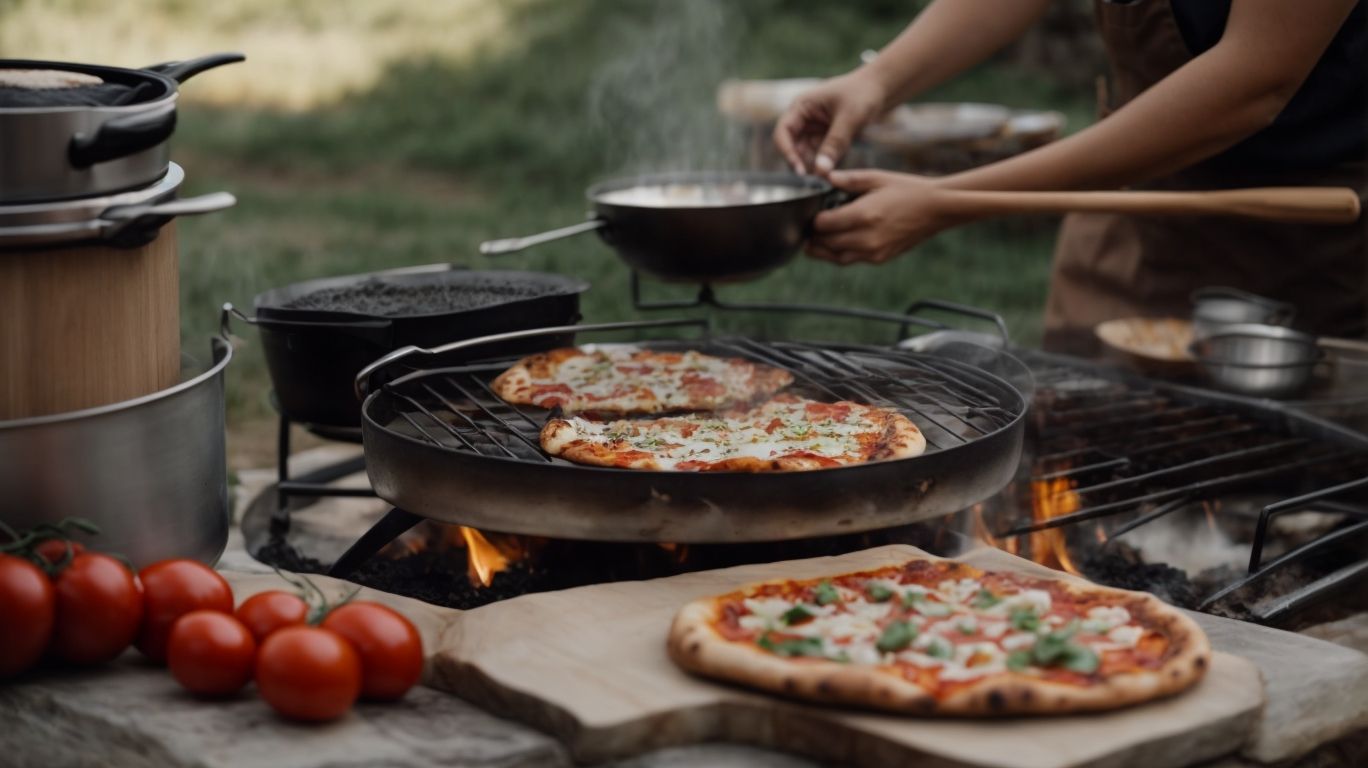
Credits: Poormet.Com – Eugene Brown
Various methods exist for cooking pizza without an oven, including stove-top, grill, and campfire approaches, each offering unique culinary experiences.
When using the stove-top method, you can create a delicious pizza on a skillet or frying pan. This technique is perfect for those who want a quick and easy homemade pizza without the need for a traditional oven.
- The grill method, on the other hand, infuses a smoky flavor into the pizza, adding a unique taste that is hard to replicate using other methods.
- Cooking pizza over a campfire brings a rustic charm to the culinary process, allowing you to enjoy the great outdoors while savoring a freshly made pizza.
Each of these methods has its own advantages, so choose the one that best suits your preferences and available resources.
Stovetop Method
The stovetop method of cooking pizza involves using a skillet to create a crispy crust with delicious toppings, offering a convenient and flavorful pizza experience.
To start cooking pizza on the stovetop, begin by preheating your skillet over medium heat. While the skillet is heating, prepare your pizza dough and gather your favorite toppings. Once the skillet is hot, carefully transfer the rolled-out dough to the skillet, ensuring it fits snugly.
Allow the dough to cook for a few minutes until the bottom becomes golden brown and crispy. This step is crucial for achieving a perfect crust. Next, quickly flip the dough to cook the other side.
After flipping the dough, quickly add your sauce, cheese, and desired toppings. Cover the skillet to allow the cheese to melt and the toppings to heat through. This will help create a deliciously flavorful combination.
Grill Method
Grilling pizza is a popular method that imparts a smoky flavor to the crust, requiring careful sauce application and timely flips for optimal results.
When using a grill to cook pizza, the direct heat source creates a unique charred flavor that is difficult to replicate in a conventional oven. To sauce the pizza on the grill, it’s essential to use a light hand to avoid sogginess and uneven cooking.
- Spread the sauce thinly and evenly,
- keep toppings minimal to ensure even cooking,
- and rotate the pizza occasionally for uniform browning.
Remember to flip the pizza halfway through the cooking process to achieve that perfect combination of crispy crust and gooey melted cheese.
Campfire Method
Cooking pizza over a campfire adds an adventurous touch to the culinary process, allowing for creative topping combinations and the use of a lid for thorough cooking.
When preparing pizza over a campfire, the dancing flames beneath your pizza stone or cast-iron skillet create a unique cooking environment. The rustic aroma as the dough crisps, and the savory toppings meld together under the open sky is truly unbeatable.
Consider topping your campfire pizza with unconventional ingredients like figs, prosciutto, or balsamic glaze for a gourmet twist on this classic dish. The contrast of the charred crust and fresh toppings infuse each bite with a burst of flavor, elevating your outdoor dining experience to a whole new level.
Using a lid while cooking your pizza over the campfire aids in trapping heat, ensuring thorough cooking and melting of the cheese while still allowing the smoke-kissed essence to permeate every slice.
So, next time you find yourself in the wilderness, try this unconventional method of pizza-making and savor the delicious results around the crackling warmth of a campfire.
What Ingredients Do You Need for Pizza Without an Oven?
To cook pizza without an oven, essential ingredients include pizza dough, flavorful sauce, and a variety of toppings to customize your culinary creation.
- Pizza Dough: The foundation of your pizza, the dough should be well-kneaded and allowed to rise for optimal thickness and texture.
- Flavorful Sauce: Whether you prefer classic marinara, creamy white sauce, or pesto drizzles, the right sauce can elevate your pizza to new heights of deliciousness.
- Toppings Galore: From traditional mozzarella and pepperoni to adventurous combinations like pineapple and jalapeno, toppings provide that personal touch to your pizza experience.
Pizza Dough
Creating the perfect pizza dough from scratch is essential for a homemade pizza experience, following a simple recipe and mastering the art of achieving a medium consistency.
To begin, gather your ingredients which typically include flour, yeast, olive oil, salt, and water. Combine the flour and yeast in a large bowl, then add the olive oil and salt, followed by warm water to form the dough. Knead the dough until it becomes smooth and elastic, this step is crucial for the texture of your pizza dough. Let the dough rise in a warm place until it doubles in size.
Once risen, punch down the dough before shaping it into individual rounds for your pizzas. Remember, the key to a great crust is achieving a medium consistency throughout. Too thick, and it won’t cook properly; too thin, and it may not hold your toppings well.
Pizza Sauce
Selecting the right pizza sauce can elevate the flavors of your stove-top pizza, opting for an easy-to-make sauce that complements the crispy crust and toppings.
In terms of pizza, the sauce plays a crucial role in tying all the flavors together. A well-balanced sauce can enhance the overall taste experience, giving that perfect tanginess and depth of flavor. Making your own sauce allows you to customize the seasoning to match your preference.
An easy and delicious sauce recipe includes simmering crushed tomatoes with garlic, olive oil, fresh basil, and a pinch of sugar. This simple yet flavorful sauce adds a rich dimension to your pizza. Ensuring that the sauce is not too watery is essential to prevent sogginess of the crust.
Toppings of Choice
Customizing your stove-top pizza with a variety of toppings such as cheese and fresh ingredients allows for endless culinary possibilities in a skillet.
By opting for a variety of cheeses, you can enhance the flavor profile of your homemade pizza. Whether it’s classic mozzarella, creamy goat cheese, or tangy feta, cheese plays a crucial role in creating that gooey, melty goodness we all love.
Don’t just limit yourself to traditional pizza toppings; think outside the box with additions like caramelized onions, roasted veggies, or even slices of juicy pineapple for a sweet and savory twist.
The beauty of using a skillet for pizza-making lies in its versatility. It allows for a crispy bottom crust while ensuring that the toppings are perfectly cooked and melded together, resulting in a delicious pie every time.
Step-by-Step Guide to Cooking Pizza Without an Oven
Master the art of cooking pizza without an oven by following a step-by-step guide that covers heating techniques, crust preparation, and the importance of preheating your cooking surface.
If you’re craving a delicious homemade pizza but don’t have access to an oven, fear not! You can still achieve that perfect pizza experience using alternative methods. One of the keys to success in cooking pizza without an oven is effectively managing the heat source. Whether you’re using a stovetop, grill, or even a campfire, ensuring that the heat is evenly distributed is crucial for a well-cooked pizza.
In terms of the crust, achieving the right texture can make or break your pizza. To get that ideal crispy yet chewy crust, consider using a pizza stone or a cast-iron skillet. These tools help conduct heat evenly, resulting in a flavorful crust.
Don’t underestimate the significance of preheating your cooking surface. Just like with an oven, preheating ensures that your pizza cooks evenly and prevents a soggy bottom. So, give your cooking surface some time to heat up before placing your pizza on it.
Preparing the Pizza Dough
Begin your pizza-making journey by preparing the dough with essential ingredients like baking powder, making it a fun activity for children to participate in the kitchen.
First, gather the necessary ingredients including all-purpose flour, salt, olive oil, warm water, and of course, baking powder. In a large mixing bowl, combine the flour, a pinch of salt, and a tablespoon of baking powder. Create a well in the center and slowly pour in the warm water with a dash of olive oil.
Encourage your little ones to get their hands messy and help knead the pizza dough until it forms a smooth and elastic ball. This tactile experience not only teaches them valuable kitchen skills but also makes the cooking process a memorable bonding activity.
Preparing the Pizza Sauce
Crafting a flavorful pizza sauce in a skillet can set the tone for a delicious stove-top pizza experience, ensuring each bite is bursting with rich flavors.
Using a skillet to prepare the pizza sauce offers several advantages. The wide surface area of the skillet allows for even cooking and effective reduction of the sauce, resulting in a concentrated flavor profile. The skillet’s material, whether it’s cast iron or stainless steel, imparts a unique depth to the sauce, enhancing the overall taste of the pizza.
Assembling the Pizza
Assemble your stove-top pizza with care, layering toppings in a skillet and using a lid for thorough cooking that melds the flavors beautifully.
Create a flavorful base by spreading a thin layer of pizza sauce on your pizza dough, ensuring an even distribution. Next, sprinkle a generous amount of shredded mozzarella cheese over the sauce to provide that gooey, melty goodness that every pizza craves. For the toppings, opt for a colorful variety like bell peppers, pepperoni, onions, and olives, distributing them evenly across the cheese layer. Place the skillet on low heat and cover it with a lid to trap the heat and cook your pizza toppings to perfection.
Cooking the Pizza
Cooking the perfect stove-top pizza involves achieving a medium crust and flipping it at the right moment to ensure an evenly cooked and delicious final product.
Start by preparing your pizza dough, ensuring it’s at room temperature for easy handling. Roll out the dough into a round shape, ensuring it’s not too thin or too thick to achieve that ideal medium crust.
- Once your crust is ready, preheat a skillet on medium-low heat.
- Place the pizza dough on the skillet without any toppings to cook the bottom layer first, ensuring it doesn’t burn and reaches that perfect crispiness.
- When the bottom is cooked to your liking, it’s time to flip the pizza.
- Use a large spatula or a plate to carefully flip the pizza and cook the other side until the crust achieves a beautiful golden-brown color.
Tips and Tricks for Perfecting Pizza Without an Oven
Enhance your stove-top pizza-making skills with expert tips and tricks that simplify the process and elevate the final dish, utilizing the easy and versatile nature of a skillet.
If you want to achieve that perfect crust without using an oven, a skillet can be your best friend.
To start the process, gather all your favorite pizza toppings and pre-made pizza dough.
Once you have everything ready, heat your skillet on medium-high heat and proceed to roll out your dough to fit the skillet size properly. This method not only cooks the pizza quickly but also imparts a wonderful crispness to the crust that many pizza lovers cherish.
Conclusion: Enjoy Your Homemade Pizza Without an Oven!
Relish the satisfaction of savoring your homemade stove-top pizza, where the crispy crust and delectable toppings combine to create a culinary delight.
When making pizza on the stovetop, the process involves a unique blend of techniques to ensure a successful outcome. One key aspect is achieving the perfect balance between a crispy crust and the gooey melted cheese that many pizza enthusiasts crave. By carefully monitoring the heat and adjusting the cooking time, you can customize your pizza to suit your preferences, whether you prefer a thin and crispy base or a slightly thicker crust.
Experimenting with different toppings is another delightful aspect of creating homemade pizza. From classic favorites like gooey mozzarella and tangy tomato sauce to adventurous combinations with roasted vegetables and aromatic herbs, the possibilities are endless. Each bite bursts with flavors that you can tailor to your liking, making every homemade pizza a unique and personal culinary creation.
Frequently Asked Questions
How to Cook a Pizza Without an Oven?
1. Can I cook a pizza without an oven?
Yes, there are several alternative methods to cooking a pizza without an oven. Some options include using a skillet, a grill, or a stovetop.
2. What is the best alternative method to cook a pizza without an oven?
The best alternative method depends on personal preference and the equipment you have on hand. However, using a skillet or a grill are popular options and can produce a crispy and delicious pizza.
3. How do I cook a pizza on the stovetop?
To cook a pizza on the stovetop, heat a skillet on medium-high heat and place the pizza in the skillet. Cover the skillet and cook for about 8-10 minutes, until the crust is crispy and the cheese is melted.
4. Can I use a microwave to cook a pizza?
While it is possible to cook a pizza in the microwave, the results may not be as desirable as using other methods. The crust may become soggy and the cheese may not melt evenly.
5. How do I cook a pizza on a grill?
To cook a pizza on a grill, preheat the grill to medium-high heat. Place the pizza directly on the grill grates and close the lid. Cook for about 5-7 minutes, until the crust is crispy and the cheese is melted.
6. Are there any special tricks to cooking a pizza without an oven?
Yes, a few tips to keep in mind when cooking a pizza without an oven are to preheat your cooking surface, use a cast iron skillet for a crispy crust, and to monitor the temperature and cooking time closely to prevent burning.

